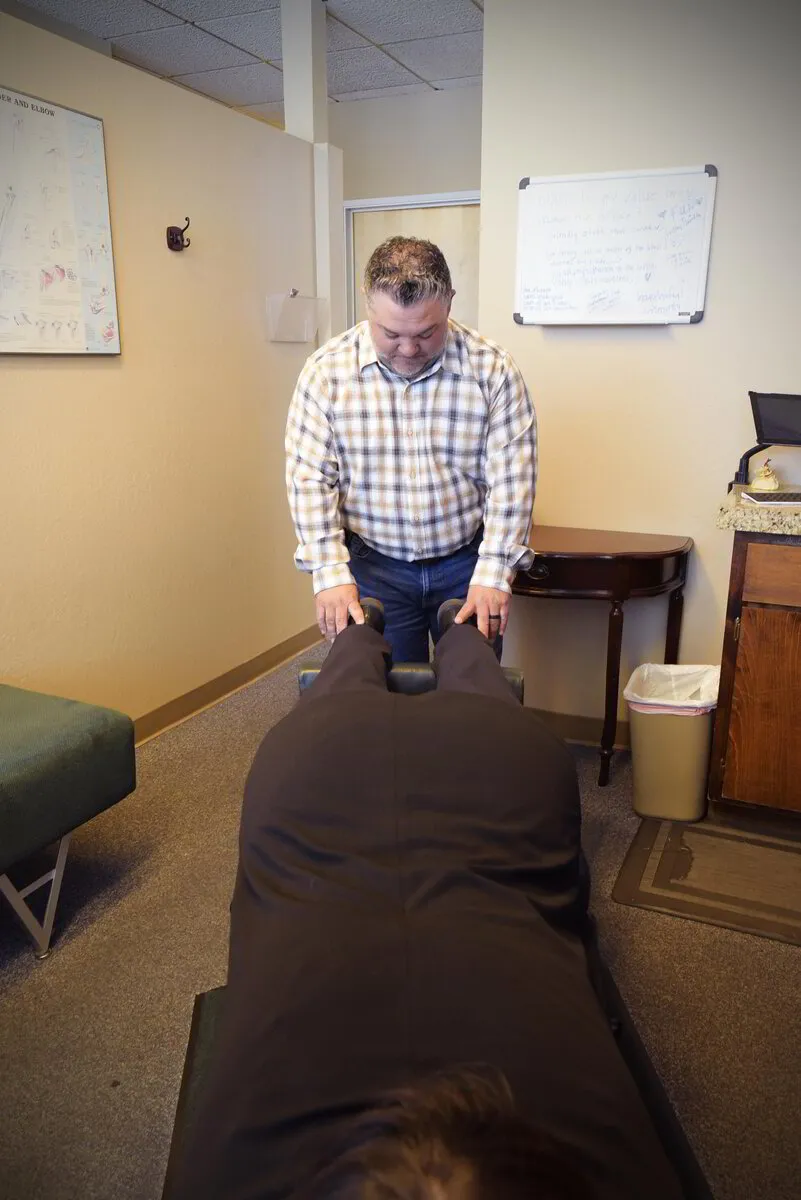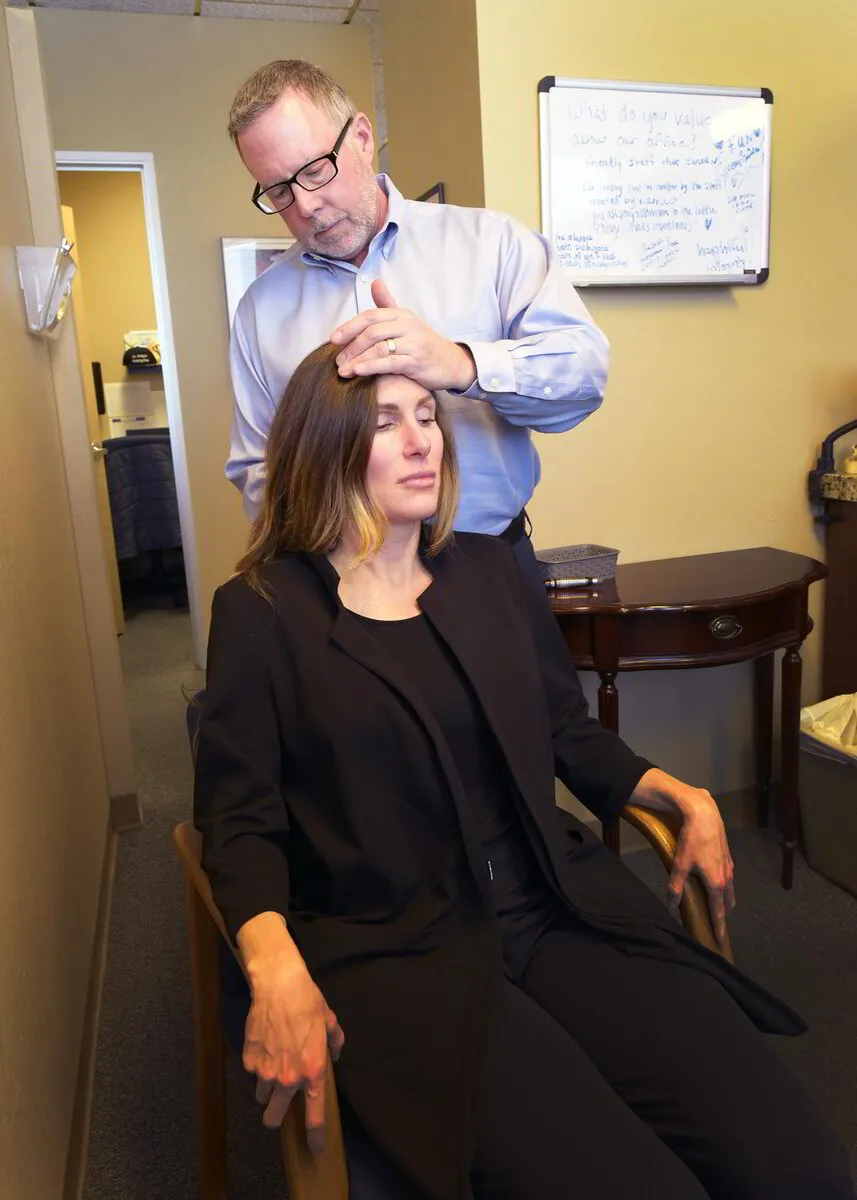WHAT TO EXPECT
YOUR First VISIT
Knowing what to expect when you begin chiropractic care will help you understand what we are doing and why. We have found that the more a person understands about the process, the better the results. This section briefly describes what will most likely happen during your first two visits, as well as what you can expect thereafter.
All chiropractic care begins with an initial consultation and examination. On the first visit, we aim to learn a detailed history of your health and lifestyle. You may be asked questions about your medical history, family history, dietary habits, training programs, occupation, etc. Questions about your symptoms are especially important-How long have you had the problem(s)? How did it start? Does anything make it worse? Better? And so on.
Once your history has been discussed, a physical examination will be conducted. Depending on the situation, basic information (e.g., height, weight, ligament and muscle tests, reflexes, and range of motion) will be collected. In addition, a careful spinal examination and analysis will be performed to detect any abnormalities that may be affecting or causing your condition.
In some cases, we will need to collect more data to more accurately diagnose your condition. Diagnostic studies may include, but are not limited to, x-rays, MRIs, and other scans. These are helpful in identifying structural abnormalities; they also serve as a “baseline,” a record that can be used to assess the progress and effectiveness of treatment.
Once all the data have been collected, we will then determine if you are a candidate for chiropractic care, or whether you also need additional evaluation and co-management with another health-care professional.
Quite simply, you will be told what is wrong with you, what we plan on doing about it, and what this will cost. You will be given an individualized treatment plan that may include (but is not limited to) adjustments, physical therapy, strengthening exercises, stretching exercises, diet suggestions, and other lifestyle recommendations.
Visual aids (such as a model of the spine or joint) will most likely accompany this discussion so you can clearly see what is occurring. Usually, we treat patients on the first visit, then go over short and long-term treatment goals on the second office visit.
Knowing what to expect when you begin chiropractic care will help you understand what we are doing and why. We have found that the more a person understands about the process, the better the results. This section briefly describes what will most likely happen during your first two visits, as well as what you can expect thereafter.
All chiropractic care begins with an initial consultation and examination. On the first visit, we aim to learn a detailed history of your health and lifestyle. You may be asked questions about your medical history, family history, dietary habits, training programs, occupation, etc. Questions about your symptoms are especially important-How long have you had the problem(s)? How did it start? Does anything make it worse? Better? And so on.
Once your history has been discussed, a physical examination will be conducted. Depending on the situation, basic information (e.g., height, weight, ligament and muscle tests, reflexes, and range of motion) will be collected. In addition, a careful spinal examination and analysis will be performed to detect any abnormalities that may be affecting or causing your condition.
In some cases, we will need to collect more data to more accurately diagnose your condition. Diagnostic studies may include, but are not limited to, x-rays, MRIs, and other scans. These are helpful in identifying structural abnormalities; they also serve as a “baseline,” a record that can be used to assess the progress and effectiveness of treatment.
Once all the data have been collected, we will then determine if you are a candidate for chiropractic care, or whether you also need additional evaluation and co-management with another health-care professional.
Quite simply, you will be told what is wrong with you, what we plan on doing about it, and what this will cost. You will be given an individualized treatment plan that may include (but is not limited to) adjustments, physical therapy, strengthening exercises, stretching exercises, diet suggestions, and other lifestyle recommendations.
Visual aids (such as a model of the spine or joint) will most likely accompany this discussion so you can clearly see what is occurring. Usually, we treat patients on the first visit, then go over short and long-term treatment goals on the second office visit.
YOUR SECOND VISIT
REVIEW OF FINDINGS
During the second visit, we continue to expand the explanation of your initial diagnosis and personalized treatment plan. With your input, both short- and long-term goals will be established.
The resulting treatment plan will provide you with a clear understanding of where you are, where you want to be, and how we will get there. Re-evaluation of your response to care typically occurs within the first month. At which point, we will reevaluate your progress in various ways including changes in symptom intensity, frequency, onset, range-of-motion, or various written functional questionnaires.
Typically we do a re-exam after 4 weeks.
With chiropractic care, we’ll get there together.
Contact our office now to schedule an appointment.
FEES
New Patient Exam:
$110.00
X-Rays:
$135.00 (per area)
Chiropractic Manipulative Treatment:
$80.00
Therapies:
$35.00
Re-Exams:
$35.00
good faith estimate notice
As of January 1, 2022, a new Federal law, THE NO SURPRISE ACT, requires all health care providers to post a “Good Faith Estimate Notice” on their websites.
You have the right to receive a “Good Faith Estimate” explaining how much your medical care will cost.
Under the law, health care providers need to give patients who don’t have insurance, or who are not using insurance an estimate of the bill for medical items and services.
- You have the right to receive a Good Faith Estimate for the total expected cost of any non-emergency items or services. This includes related costs like medical tests, prescription drugs, equipment, and hospital fees.
- Make sure your health care provider gives you a Good Faith Estimate in writing at least 1 business day before your medical service or item. You can also ask your health care provider, and any other provider you choose, for a Good Faith Estimate before you schedule an item or service.
- If you receive a bill that is at least $400 more than your Good Faith Estimate, you can dispute the bill.
- Make sure to save a copy or picture of your Good Faith Estimate.
For questions or more information about your right to a Good Faith Estimate, visit www.cms.gov/nosurprises or call 800-985-3059.


